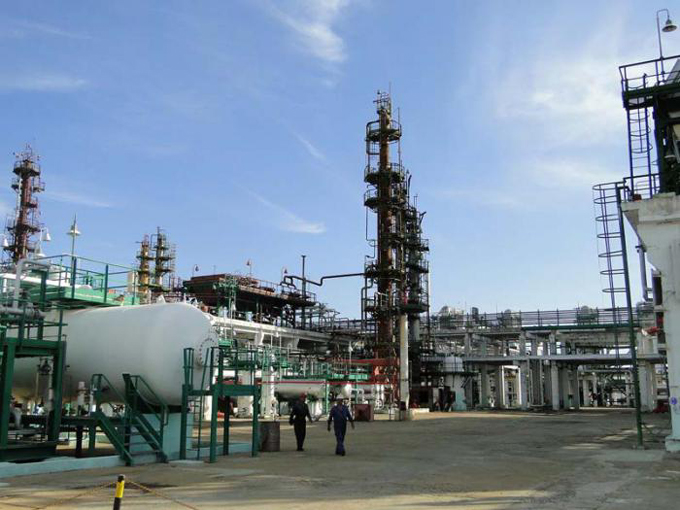
No more drama. Action.
The announcements made at the National Assembly last July surprised many and worried most. However, the outlook is just another chapter in a deeper problem, already chronic, in Cuba’s economic trajectory: the incapacity to generate enough hard currency to cover the nation’s requirements for economic and social development.
While it is hardly an exclusively Cuban phenomenon, specific factors converge here that determine its recurrence, extent and possible solutions.
Similar episodes occurred in the early 1990s for well-known reasons; in the early 2000s, as a result of the attack on the Twin Towers and the resulting impact on tourism; and in the first decade (2009-2010) under the government of Raúl Castro.
Almost always, there is an external trigger that unleashes the crises but ends up masking its structural nature. The response, which usually is a tightening of the belt (investments, importations) to restore balance short-range with lesser growth, operates in a similar manner, without in-depth changes that prevent similar situations in the future.
To be clear, an adjustment is always an ingredient of the cocktail; the difference is either to resign to it or take advantage of the opportunity to make greater changes.
The current crisis arose from a combination of internal and external situations, the latter having attracted greater attention. Among them is the deterioration of the Venezuelan economy, a factor that probably deserves greater consideration.
The reduction in shipments of fuel and Venezuela’s difficulty in compensating the services that Cuba provides to that nation are obvious channels of transmission.

The collapse in oil prices indicates that the sales of derivatives have also suffered. Recently, it was announced that the Cienfuegos refinery, a joint venture by CUPET and PDVSA, will shut down for maintenance for at least 120 days. As if that weren’t enough, Brazil, the second most important market for Cuba’s health services, is going through its own crisis.
Brazil’s GNP has dropped for two consecutive years, and the political crisis ended up removing the Workers Party from power. The WP was a generator of Brazil’s rise in the ranking of Cuba’s economic partners for the past 15 years.
Besides, both Venezuela and Brazil are big markets for Cuban biopharmaceuticals, our third largest export product.
Other winds in the international markets are also blowing in the wrong direction. Trade in sugar and nickel has dropped considerably, with nickel at the lowest level in 18 years.
But there are also aspects of a domestic nature that cannot be ignored. Exports have grown very slowly in the past decade, especially the sale of goods. A substantial part of those sales is made on the basis of government pacts under preferential conditions, which makes them vulnerable to the political juncture of the participating governments.
This includes most of the professional services (especially medical services), the oil derivatives and some of the medications and other products from that industry. Overall, this represents more than 60 percent of the total exports.
There have also been problems in production. The 2016 sugar harvest was 20 percent smaller than the previous harvest. The production of nickel declined after one processing plant was closed and capital repairs began in another. Although remittances from abroad hopefully grew in the past several years, their total amount could not fully replace other revenue sources.
In addition, the monetary and exchange panorama has led to an uptick in dollarization, with the predictable result that the dollars flow in through informal circuits that do not directly reflect on the Balance of Payments.
The launching of the Mariel Development Zone in late 2013 and the passing of a new Foreign Investment Law in March 2014 created expectations inside and outside Cuba that have not proved satisfactory in actual practice. More than two years have passed since their adoption, marked by a rate of new initiatives that, all things considered, do not move at the pace that Cuba requires.
At the National Assembly sessions where the new law was passed, it was announced that Cuba would try to attract a minimum of 2 billion dollars a year in foreign investment. That looks like a distant goal.
We need to insist that it is improbable to adequately handle the needs of Cuba’s economic and social development under the current conditions unless a radical turn is made in relating with foreign capital. And that urgency will be not reduced in the coming years — quite the opposite.
While the successful restructuring of much of our foreign debt constitutes a very positive accomplishment, much remains to be done. The recently announced return of the defaults reinforces the idea that additional steps must be taken. This process improves the nation’s ability to finance itself in the international markets, but also generates an additional pressure short-range, because prior to the accords no payments were made on those debts. The effect is particularly noticeable in times of want.
The immediate effects are varied. The current financial tension will affect two of the key ingredients for economic growth. On one hand, projections show that investments will shrink this year. Worse, beyond the direct effect on the current GNP, the expansion of productive capabilities and infrastructure that might support future expansion and job creation will come to a halt.
On the other hand are the importations, which are key to completing the productive processes in an open economy. While the economy expanded slowly, the decline in purchases abroad will accentuate that trajectory; the decreased availability of energy will do the same.
Lamentably, this scenario also darkens the chances of advancing resolutely in the unification of currency and exchanges, at least in the short range. In any case, currency unification would be more difficult and risky now, although more imperative.
The perceptions triggered in people’s imagination are based on a whole of structural conditions that mark the current socio-economic reality. The intangible cushion that Cuban society enjoyed in the early 1990s is no longer the same. A series of reasons — such as the passing of time and the changing composition of our population — is behind it.
Likewise, the quality of public services has declined, and segments such as housing show few signs of recovery. On the other hand, the size of the informal economy and the multiple links to the international economy can contribute to giving other options to the Cuban family (or some families) to cope with their difficulties.
The fact is that these inconveniences come at a time of special importance. They occur as the new programmatic documents announced at the latest Communist Party Congress are being discussed.
Nevertheless, there are alternatives to deal with these challenges. This would be an unbeatable political moment to push forth new transformations that have been unnecessarily postponed. Some of them, such as the treatment of foreign investment, do not require extensive discussion because they’ve been already incorporated in the fundamental documents.
It is a question of putting into practice, with clear indications, whatever has been agreed upon. We could also begin to discuss how to continue improving the climate for doing business in this country. The world’s attraction toward Cuba cannot be sustained permanently on the mystique that surrounds this island, the Pearl of the Caribbean.
Domestically, facing a lack of conditions for a complete and definitive monetary reform, the authorities could implement a parallel currency exchange scheme, based on market rates, that would be utilized by all the companies (whatever type and size) engaged in foreign-trade operations, without being subject to the restriction of hard currency that affects the planned sector of the economy. It’s not the best solution, long-range, but could help temporarily.
Designing and executing a realistic and consistent policy of support for the development of exports is an issue that cannot be postponed, including elements of macroeconomic rearrangement and entrepreneurial system.
Another issue on a mid-range agenda would be Cuba’s incorporation into international financial institutions to guarantee the concessional and compensatory financing needed to leap into a more sustainable trajectory. This would end the structural and sustainable reduction of the costs of foreign financing, with long-range benefits that are hard to ignore.
Resolute action is more essential now than ever before. There is an ambitious plan of development toward 2030 that requires bigger and better efforts, not fewer.

